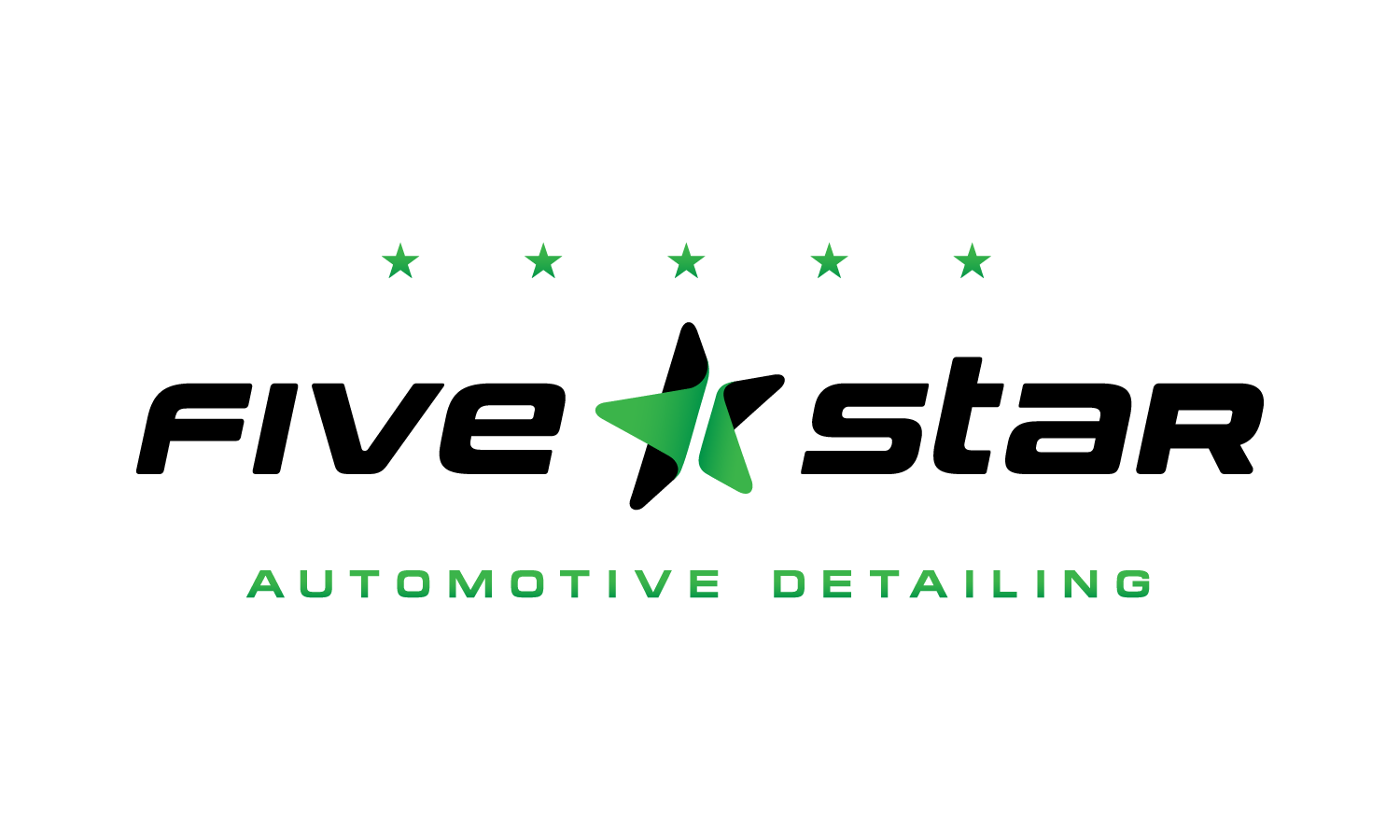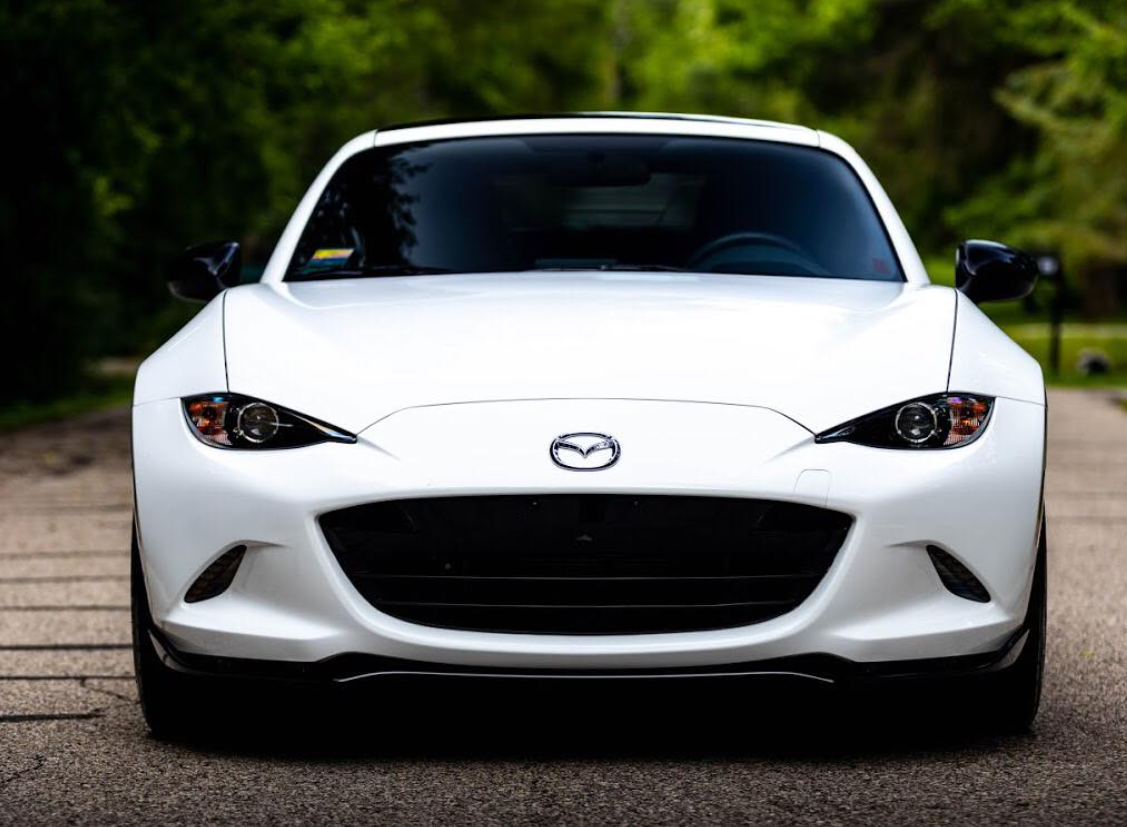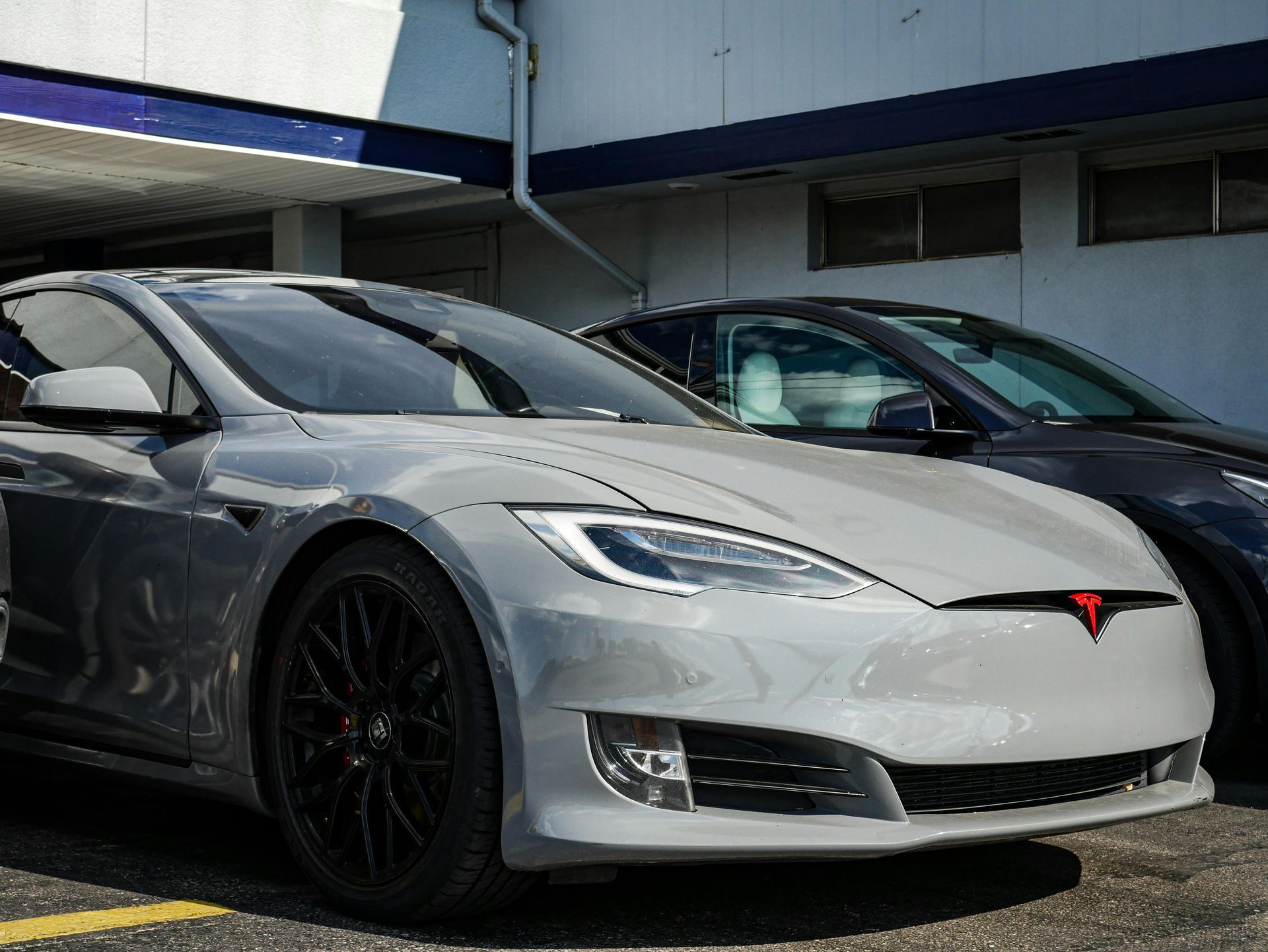Do you wish to maintain the showroom condition of your new vehicle? Perhaps you have an older vehicle that requires additional protection but are unsure of the best method to use to protect its paintwork. With various options available, it's essential to understand their differences, benefits, and drawbacks before making your decision.
This blog post will take a closer look at
ceramic coatings and
paint protection films to help you decide which one is perfect for your precious vehicle.
An Introduction to Ceramic Coating and Paint Protection Film
When it comes to protecting the exterior of your vehicle, two popular options are paint protection film and ceramic coating. Both options aim to preserve the paint job and the resale value of your car.
Paint protection film, also known as clear bra, is a clear, lightweight film made of polyurethane that can be applied to protect the paint from scuffs, minor scratches, chips, and chemical damage. It provides high impact resistance, protecting against road debris and rocks. On the other hand, ceramic coating is a liquid polymer that is hand-applied to create a chemical bond with the vehicle's paint job.
It provides a glossy finish while protecting against UV rays and oxidation.
Now let's delve deeper into the science behind
paint protection film (PPF) and how it works its magic on our vehicles.
The Science Behind Auto Paint Protection Film
Paint protection film is designed to act as a sacrificial layer between your vehicle's paint and external elements that can cause damage. This innovative vehicle protection possesses remarkable properties that enhance its protective abilities.
To begin with, it provides superior resistance to impacts.
This means it can absorb the force of small particles, such as rocks or debris, while preventing them from striking the paint surface directly. The film acts as a barrier against these potential hazards, reducing the likelihood of chips and scratches.
Additionally, paint protection film has self-healing properties.
When exposed to heat or sunlight, it can fix minor surface scratches or swirl marks by itself. This feature ensures that your vehicle maintains a pristine appearance and reduces the need for frequent touch-ups or repairs.
Another advantage of paint protection film lies in its durability.
High-quality films can withstand various environmental factors, such as UV rays, acid rain, harsh chemicals, and even bird droppings. This adds an extra layer of protection to your vehicle's paint, preventing it from fading or corroding over time.
In contrast to PPF, ceramic coating emphasizes a glossy sheen and offers water-repellent properties while providing some level of protection against environmental elements.
The choice between PPF and ceramic coating depends on personal preference and what you want to protect your vehicle from.
Some car owners opt for both PPF and ceramic coatings for comprehensive protection.
- According to a market research report published in 2022, sales of ceramic coatings saw an increase of approximately 5.7% globally, indicating a march toward this trend among vehicle owners.
- Data analyzed in 2021 shows that paint protection film has a lifespan of between 5-7 years before it begins to lose its effectiveness and require replacement.
- A customer survey report released in 2022 found that, out of the participants who had sought some form of advanced car protection, approximately 60% opted for PPF, while the remaining 40% preferred ceramic coating.
The Innovation of Ceramic Coating
In recent years, the automotive detailing industry has witnessed a remarkable advancement in car protection through the innovation of ceramic coatings. These coatings have emerged as a game changer, providing long-lasting protection as well as improved vehicle aesthetics. Ceramic coatings are advanced liquid polymer solutions that chemically bond with the factory clear coat of a vehicle, transforming it into a long-lasting protective layer.
The result is a glossy and hydrophobic finish that enhances the overall appearance of the vehicle.
Beyond their protective qualities, the ceramic coating offers many benefits. This protective coating offers long-lasting protection that can extend up to five years or more.
Furthermore, ceramic coatings provide excellent hydrophobicity, ensuring that water and other liquids slide off easily instead of adhering to the surface.
Despite its many advantages, it is critical to compare it to paint protection film, another popular vehicle protection option.
Key Differences Between PPF and Ceramic Coating
When considering options for protecting your vehicle, it's essential to understand the key differences between PPF and ceramic coatings. While both options aim to safeguard your car's paintwork, they differ in terms of the application process, durability, and level of protection. Paint protection film offers excellent impact resistance and self-healing properties, meaning minor scratches on its surface can disappear over time.
It is a popular choice for individuals looking for comprehensive protection, especially for high-impact areas like the front bumper and hood. On the other hand, the ceramic coating offers long-lasting protection and repels water and dirt effectively. Unlike PPF, they provide an all-over seamless coating rather than localized protection.
To put it another way, PPF protects the car from serious dings and scratches, and ceramic coatings provide an all-around shield that makes the car shine better and keeps dirt and debris out.
Ultimately, the choice between
paint protection film
and
ceramic coating depends on your specific needs and preferences. If you prioritize maximum physical protection in high-impact areas, PPF may be the better option. However, if you desire an overall enhanced appearance with long-lasting protection and ease of maintenance, ceramic coatings can be a superior choice.
Application Process and Durability
The application process and durability are two of the most important considerations when looking into car protection options.
The process of applying PPF involves delicately smoothing the vehicle's paintwork with a transparent material. The film is cut and shaped according to the specific car model and the intricacies of its body.
While professional installation is recommended for optimal results, it is possible to apply PPF yourself with some guidance. On the other hand, ceramic coating is applied as a liquid polymer that chemically bonds with the paint surface, creating a hard, transparent layer.
This application process necessitates meticulous surface preparation and attention to detail, making professional application desirable.
Paint protection films and
ceramic coatings are both durable; however, PPF is more resistant to physical impacts and has a lifespan of 7-10 years, whereas ceramic coatings have a lifespan of 2-5 years.
Protective Factors and Appearance
In addition to the application process and durability, protective factors and appearance are important considerations when comparing the two protective solutions.
Paint protection film excels in terms of impact resistance, shielding the vehicle from scratches, rock chips, and physical damage. It also enhances protection against UV rays, oxidation, and acidic contaminants. The self-healing nature of it allows minor scratches to disappear with time, preserving the vehicle's appearance.
However, one drawback of PPF is that it can yellow over time if not properly maintained or exposed to harsh weather conditions.
Conversely, ceramic coatings provide excellent protection against UV rays, chemicals, fading, and oxidation while enhancing gloss and depth in a vehicle's paintwork. Its hydrophobic properties ensure water beads off easily, making it easier to clean the car. Ultimately, the choice between PPF and ceramic coatings depends on individual preferences regarding desired protection and appearance.
For those seeking superior physical protection and self-healing properties, PPF might be the preferred option. Ceramic coatings, on the other hand, are better suited if enhanced gloss and ease of maintenance are desired.
It is important to note that both options can work in tandem to provide the best car protection.
Benefits of PPF and Ceramic Coatings
Both PPF and ceramic coatings offer numerous benefits for protecting your vehicle's paintwork.
Let's explore some of the advantages of each option:
PPF provides superior impact resistance, guarding your car against scratches, rock chips, and other physical damage. It also shields the vehicle from harmful UV rays and environmental factors. One of its significant advantages is its ability to offer invisible protection without altering the appearance of your vehicle.
Additionally, paint protection film has excellent longevity, ensuring the long-term preservation of your car's paint.
On the other hand, ceramic coating is a liquid polymer that chemically bonds with the paintwork, resulting in a high gloss and enhanced aesthetic appearance. It protects against various elements, such as chemical exposure and UV rays.
Ceramic coatings also offer easy maintenance, making it simpler to clean your vehicle and maintain its shine over time. Similarly to PPF, it exhibits remarkable durability, allowing your vehicle to enjoy long-lasting protection. When deciding between PPF and ceramic coating, it's crucial to consider what matters most for you, whether it be impact resistance or a glossy finish, among other factors.
Keep in mind that both options are effective at taking care of your vehicle's paintwork, albeit through different methods.
Impact Resistance and Glossy Finish
One essential aspect to consider when choosing between PPF and ceramic coatings is their performance in terms of impact resistance and glossy finish.
Paint protection film is particularly renowned for its exceptional impact-resistance properties. Thanks to its durable film layer, it serves as a strong barrier against physical damage like rock chips and scratches.
This makes it an ideal choice if you frequently drive on gravel roads or encounter debris from construction sites or highway driving. The strength of this film lies in its ability to absorb the impact of such hazards, safeguarding your paintwork beneath.
Ceramic coatings, on the other hand, offer an unparalleled glossy finish that adds a lustrous and sleek appearance to your vehicle.
The chemical bonding of the coating with the paintwork creates a highly reflective surface that enhances the aesthetics of your car.
The smoothness and shine provided by ceramic coatings can make your vehicle stand out in any setting, turning heads wherever you go. Although both PPF and ceramic coatings have several benefits, there are some considerations to make when selecting one over the other.
Paint protection film offers superior impact resistance but may alter the appearance slightly due to its film nature. On the other hand, ceramic coatings excel at providing a glossy finish but may have limited to no-scratch resistance compared to PPF.
Vehicle Protection Checklist: Choosing Between PPF and Ceramic Coating
Ceramic coating and paint protection film are two common choices for safeguarding a vehicle's exterior. Each option has its own set of benefits and drawbacks; which one to choose is a matter of personal preference and specific requirements.
To help you choose between these two protective solutions, consider the following checklist:
1. Level of Protection: Determine what aspects of your vehicle's exterior you want to prioritize protecting. If you're concerned about chips, scuffs, and scratches from road debris or rocks, paint protection film may be the better choice due to its high-impact resistance properties.
On the other hand, if you're looking to enhance the glossy sheen of your paint job and benefit from water-repellent properties, the ceramic coating may be more suitable.
2. Longevity: Evaluate how long you want the protective solution to last on your vehicle. PPF typically has a lifespan of around 5-7 years, whereas ceramic coatings can last longer with proper care and maintenance.
3. Maintenance Requirements: Consider the level of maintenance you are willing to commit to to keep the protective layer in place. Ceramic coatings require less ongoing maintenance than PPF, but regular maintenance is still required for optimal performance.
4. Budget: Take into account your budgetary constraints. While both PPF and ceramic coating can be considered investments in prolonging the pristine appearance of your vehicle, each option comes with its price tag. Conduct research and obtain quotes from trusted professionals to understand the costs involved.
5. Comprehensive Protection: Think about whether you might benefit from combining both PPF and ceramic coating for comprehensive protection. Most car owners prefer to use paint protection film to protect against chips and scratches while also benefiting from the ceramic coating's glossy finish and water repellency.
By considering the above checklist, you can make an informed decision about whether PPF or ceramic coating is the best car protection option for your vehicle. Remember, both options offer valuable features but cater to different needs and objectives.
Experience the Five Star Automotive Difference, Your Ultimate Choice for Pristine Vehicle Protection in Rochester, MN!
At Five Star Automotive Detailing, we redefine excellence in automotive detailing, providing a personal touch to every vehicle, from classic cars to contemporary sedans.
Our team of certified and experienced professionals is dedicated to setting the gold standard in vehicle detailing. Our dedication goes beyond routine detailing; we specialize in expert PPF and ceramic coating installation, ensuring your vehicle's paintwork remains flawless.
Our attention to detail guarantees that our customers receive more than just a service—they receive an experience. We protect vehicles using the highest-quality PPF and ceramic coating installations using cutting-edge techniques. Trust
Five Star Automotive Detailing for a seamless combination of professionalism and personalized service.
Contact us today or visit us online for more details and to request a free consultation!
CONTACT US TO LEARN MORE ABOUT OUR DETAILING SERVICES
CONTACT
Five Star Automotive Detailing
3820 21st St SE, Rochester, Minnesota, 55904, United States
OPEN BY APPOINTMENT ONLY
- Mon - Sat
- Appointment Only
- Sunday
- Closed
READ OUR WEEKLY BLOG
5 Star Automotive Detailing was designed by the team at Detailers Roadmap, a platform developed for detailing operators across the globe.
All Rights Reserved | 8bitcreative, LLC | Five Star Automotive Detailing






